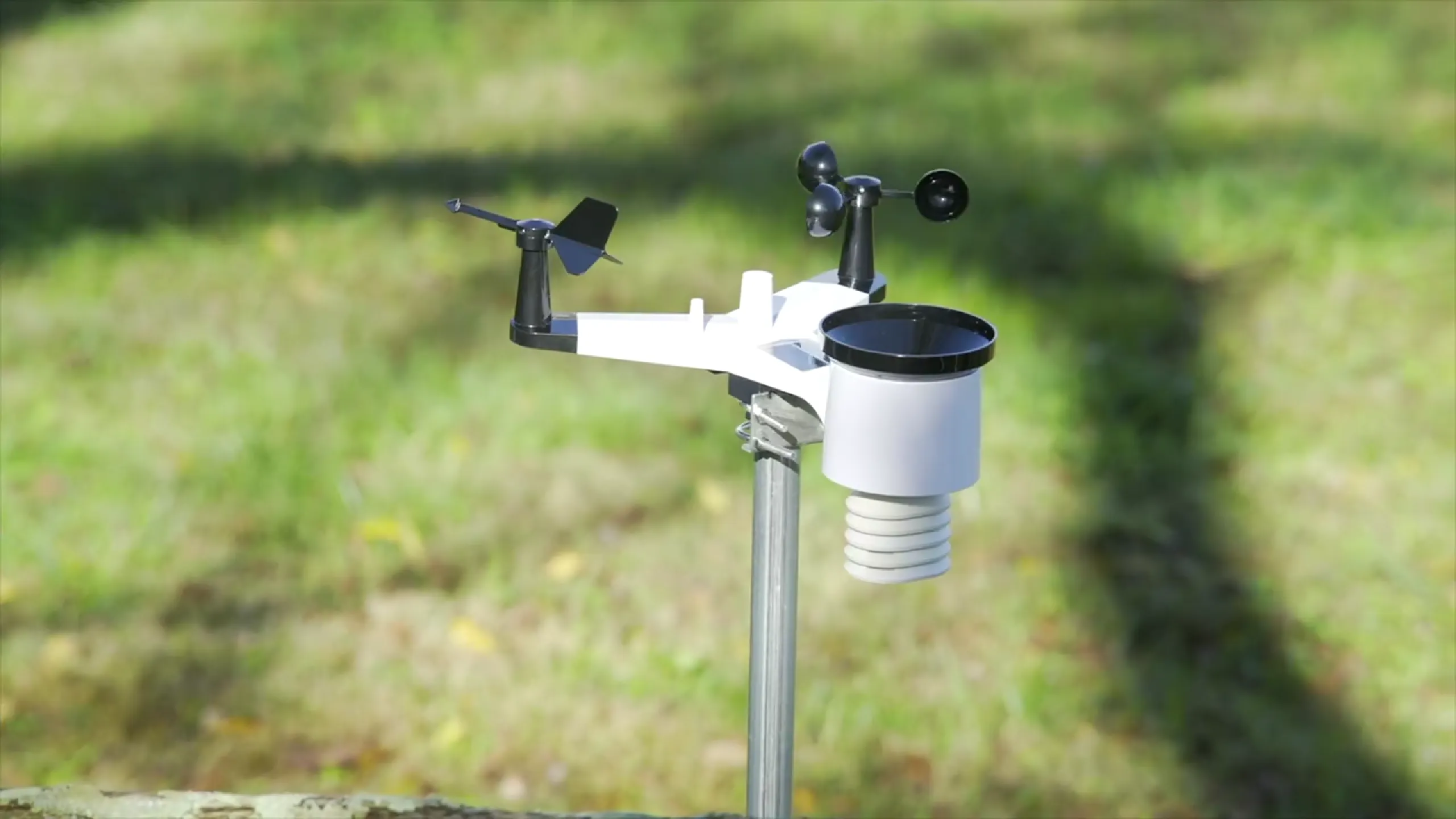
So, you want to install a weather station, but you might be wondering, “Why do I need one for my home?” Well, you’re in the right place to find out! In this smart home episode, we’ll explore the many benefits of having a weather station in your own backyard. We’ll cover everything from tracking weather changes to growing a thriving garden and more. Let’s dive in and see why a weather station is a must-have for every homeowner.
Table of Contents
What is a Weather Station?
First things first, let’s clarify what a weather station is. It’s like having a little weather scientist at your home. Weather stations are equipped with sensors that measure various weather-related parameters, including temperature, humidity, wind speed, wind direction, rainfall, and atmospheric pressure. They provide real-time data that can help you understand the weather conditions in your immediate area.
We believe you got your answer what is weather station and why do you need it. If not then let’s find out the benefits to get a clear idea.
Benefits of Using a Weather Station for Home
Owning a home weather station is a game-changer. It offers a wide array of advantages, from predicting local weather patterns to conserving energy and nurturing your garden. Now, let’s talk about the good stuff – the benefits of having a weather station right at home:
Track Changes in the Weather Over Time
Weather stations act as your personal meteorologist. They continuously collect data on temperature, humidity, and more, allowing you to observe the fascinating ebb and flow of your local climate. It’s akin to having a well-documented weather history book right at your fingertips, enabling you to spot trends and patterns with ease.
Predict Future Weather Conditions
Have outdoor plans? Wondering if a raincoat or sunglasses will be your best companion? Your weather station can play the role of your personal crystal ball. By analyzing current conditions and historical data, it gives you a sneak peek into what’s in store, helping you make well-informed choices for your day ahead. Say hello to stress-free weather planning!
Monitor Indoor and Outdoor Air Quality
Your weather station is more than a weather guru; it’s an air quality detective too. By keeping tabs on pollutants like particulate matter, ozone, and nitrogen dioxide, it helps ensure you breathe cleaner, healthier air both indoors and out. It’s like having a guardian for your well-being.
Save Energy on Heating and Cooling Costs
Tired of high energy bills? Your weather station can be your energy-saving ally. With real-time updates on temperature and humidity, you’ll know precisely when to adjust your thermostat. Say farewell to wasteful heating and cooling expenses, and hello to a cozier, eco-friendly home!
Grow Plants and Vegetables
Calling all green thumbs! Your weather station is your gardening BFF. It offers valuable insights, letting you know the best times to plant, water, and fertilize your garden. With its guidance, you can nurture your plants and vegetables to flourish and thrive. It’s like having a botanical expert right in your backyard!
And More!
Weather stations are incredibly versatile. Beyond the usual weather-related tasks, you can get creative with them. Use them to track local wildlife movements, delve into scientific research, or simply indulge your curiosity about the environment around you. There’s no limit to the exciting possibilities!
How to Choose the Right Weather Station
When choosing a weather station for your home, there are a few factors to consider:
Features: What features are important to you? Do you want a weather station that measures temperature, humidity, wind speed, wind direction, rainfall, and pressure? Or do you want a more basic weather station that only measures temperature and humidity?
Accuracy: Look for a weather station that is accurate and reliable. Read reviews of different weather stations before making a purchase.
Price: Weather stations can range in price from around $50 to $300. Choose a weather station that fits your budget.
Ease of use: Some weather stations are easier to use than others. Choose a weather station that is easy to set up and use.
In addition to these factors, you may also want to consider the following when choosing a weather station for your home:
Display: Choose a weather station with a display that is easy to read and understand.
Connectivity: Some weather stations can be connected to a smartphone or computer, allowing you to view the weather data remotely. Consider whether or not this is a feature that is important to you.
Durability: Choose a weather station that is durable and can withstand the elements.
Warranty: Look for a weather station with a good warranty. This will protect you in case the weather station malfunctions.
Here are some additional tips for choosing the right weather station for your home:
Consider your needs: What do you need a weather station for? If you are just looking for a basic weather station to track the temperature and humidity, you can choose a less expensive model. However, if you need a more sophisticated weather station to track other weather conditions, such as wind speed and wind direction, you will need to spend more money.
Read reviews: Before you buy a weather station, read reviews of different models. This will help you to learn about the pros and cons of each model and to choose the best weather station for your needs.
Compare prices: Weather stations can range in price from around $50 to $300. Compare the prices of different models before you make a purchase.
How to Set Up and Use a Weather Station
- Choose a location for your weather station: The weather station should be placed in a shady spot, away from direct sunlight and heat sources. It should also be placed in a location where it will not be obstructed by trees or other objects.
- Assemble the weather station according to the manufacturer’s instructions: This may involve attaching the different sensors to the main unit and mounting the weather station on a pole or other structure.
- Connect the weather station to a power source: This may involve plugging it into an outlet or connecting it to a solar panel.
- Turn on the weather station and calibrate it according to the manufacturer’s instructions: This may involve setting the time and date and entering your location information.
- Connect with smartphone and PC: If your weather station supports Wi-Fi and comes with a smartphone and PC application service you should connect it according to the manufacturer’s instructions.
- Once the weather station is calibrated, it will begin collecting data: You can view the data on the weather station’s display or on a connected smartphone or computer app.
Conclusion
In a nutshell, a weather station is a fantastic addition to your home that can offer numerous benefits. From predicting the weather to saving on energy bills, monitoring air quality, and growing a lush garden, it’s like having your own weather expert right in your backyard. The possibilities are endless. So, don’t wait any longer – get your weather station and start enjoying the perks it brings to your home.








